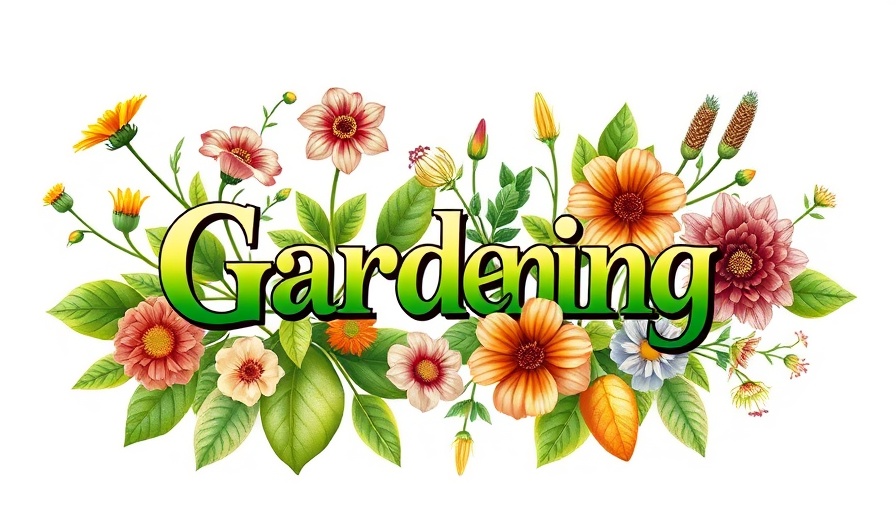
The Joy of Growing Your Own Potatoes
Potatoes are not just staples in our kitchens; they are also incredibly rewarding to grow at home. From the sweet taste of fresh new potatoes to the rich heartiness of storage potatoes, cultivating your own harvest brings satisfaction that goes beyond cooking. Whether you have a sprawling garden, a patio with containers, or even a sunny kitchen window, growing potatoes can be an accessible project for any homeowner. But how do you know when the time is right to dig up this buried treasure?
When Is the Right Time to Harvest Potatoes?
Harvesting potatoes is an exciting task, especially for families with kids, as it turns into a thrilling “treasure hunt.” Understanding the difference between new potatoes and storage potatoes is crucial, as each type requires a different approach to harvesting.
The right time for harvesting new potatoes typically falls around 50 to 55 days after planting. These tender tubers can be collected once the plants begin to flower, indicating the formation of their edible beauties underground. By planting varieties that mature at different times, you can enjoy a continuous supply of new potatoes from late June through early August.
On the other hand, storage potatoes should be left in the ground longer to reach full maturity. Typically, you’ll know it’s time to dig these up when the foliage has turned yellow and appears to be dying, which usually occurs in late September to October. This allows the skins to thicken, ensuring that your harvest lasts through the cooler months. As you refine your technique and timings, soon you will be growing a bountiful stock of potatoes!
Best Practices for Harvesting Potatoes
The key to a successful potato harvest is careful handling. Harvesting should occur on a dry day to keep disease and rot at bay. When you're ready to dig, use your hands and garden tools cautiously. Avoid piercing the tubers, as damaged potatoes should be consumed right away rather than stored.
For new potatoes, simply reach into the soil around the plant and pluck a few tubers gently. Leave the rest to continue growing for a larger harvest later on. Storage potatoes should be uprooted by inserting a spade or garden fork a foot away from the plant's base, lifting the entire root ball. Interestingly, some gardeners swear by cutting back the stems before harvesting, while others prefer letting the plants naturally die back.
Caring for Your Potatoes Post-Harvest
Once harvested, how you handle your potatoes affects their longevity. Wash them only when you are ready to eat; unwashed potatoes have a longer shelf life. It’s best to cure them first—keeping them in a cool, dark, and well-ventilated place helps their skins harden and improves their storage quality. Cured potatoes can last several months, enriching your winter diet with fresh, homegrown produce.
The Benefits of Growing Potatoes
Not only is growing potatoes a satisfying endeavor, but it also comes with numerous benefits. They are versatile in culinary applications, healthy, and can be grown in varying spaces, from large gardens to small containers. Additionally, homegrown potatoes provide peace of mind regarding pesticide use, allowing you to care for them organically.
As sustainability becomes a growing concern, many homeowners are turning back to their roots—literally—with gardening practices that strengthen community ties and promote responsible consumption.
Getting Started with Your Own Potato Garden
If you’re new to gardening or seeking to enhance your green thumb, potatoes offer an ideal starting point. They are generally hardy, forgiving plants that can thrive in a range of soil conditions. Plus, growing them doesn’t require extensive knowledge or excessive maintenance.
Begin by sourcing quality seed potatoes suited for your climate, and determine your planting method—whether in beds or containers. Set yourself up for a successful harvest by following a few simple guidelines concerning watering, fertilizing, and pest management. With diligence and care, your patience will be rewarded with buckets full of delicious potatoes!
Conclusion: Dig Into the Garden Today!
Harvesting potatoes not only provides sustenance; it fosters a connection to nature and the joy of gardening. We encourage you to start your own potato-growing adventure. By nurturing these underground gems, you can provide your family with healthier food choices while relishing the deep satisfaction of cultivating your own meals. Get digging and share this enriching experience with those around you!
 Add Row
Add Row  Add
Add 


Write A Comment